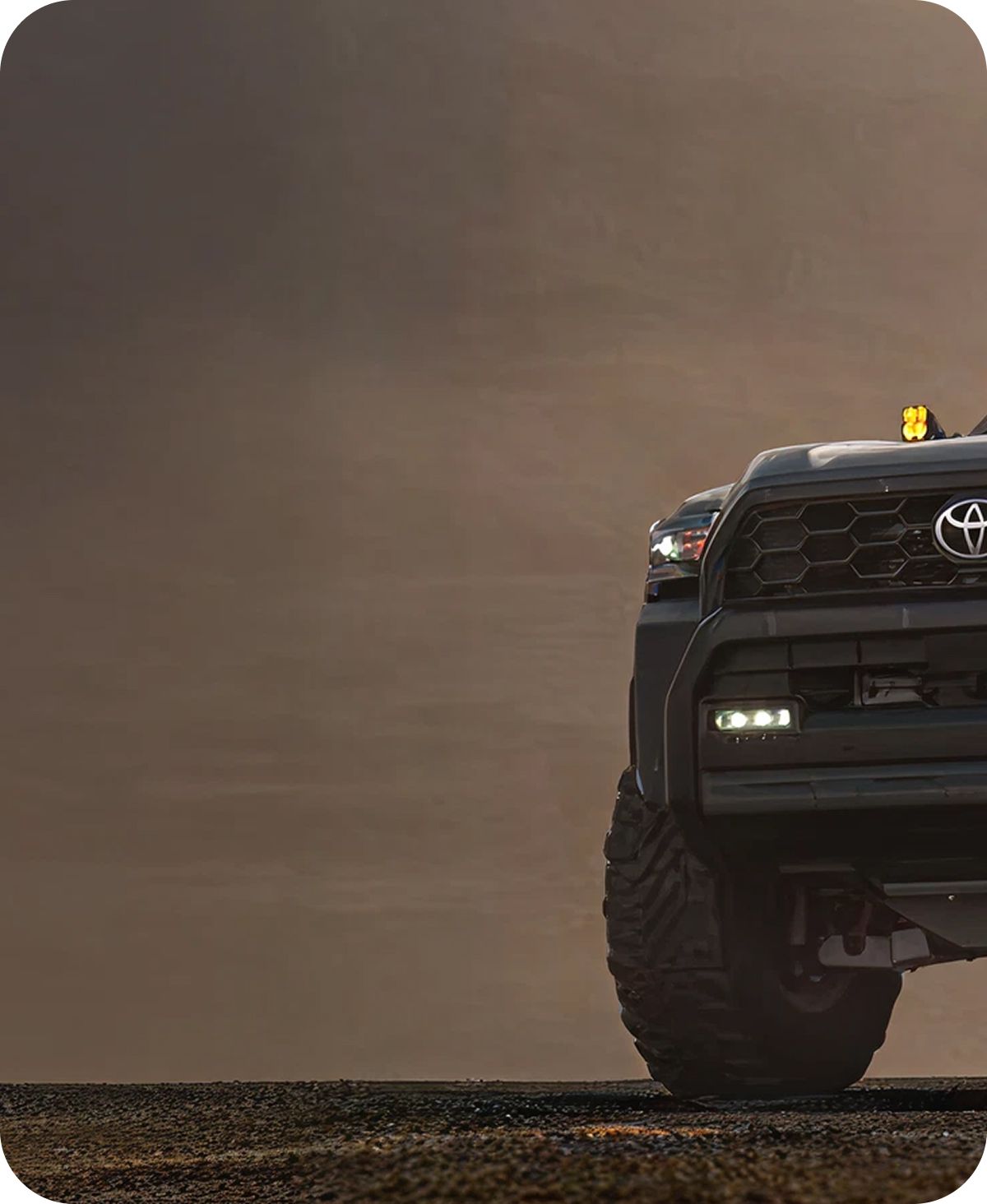Do Off-Road Lights Drain Your Battery? What You Should Know About Power Consumption
1. Introduction: The Fear of a Dead Battery on the Trail
Off-road adventures bring freedom and thrill, but they also come with some real concerns—one of the biggest being battery failure. When you’re navigating rough terrain in the dark, your off-road lights become your lifeline. Yet, many riders worry these powerful lights might drain their battery before the trip ends, leaving them stranded miles from help. This anxiety is very common among new and even experienced off-roaders because lighting is one of the most visible power consumers on a vehicle. Understanding the relationship between your lights and battery health is critical to ensure your rides stay safe, bright, and uninterrupted.
2. How Off-Road Lighting Works (A Simple Electrical Breakdown)
To address the battery drain fear, it's important to understand how your off-road lighting system works. Your vehicle operates on a 12-volt DC electrical system, powered primarily by the battery and recharged by the alternator. The alternator generates electricity while the engine is running, replenishing the battery and powering your accessories. Every electrical device, including lights, consumes power measured in watts—a function of voltage multiplied by amperage. When you add high-powered lights to your setup, you increase the total electrical load. If the alternator can’t keep up or the engine is off, your battery will supply the extra juice, potentially draining over time. This is why power consumption awareness is crucial for every serious off-roader.
3. Understanding Power Consumption by Light Type
Not all off-road lights are created equal when it comes to power efficiency. Halogen bulbs, for example, are known for their high power draw, often consuming between 55 to 100 watts each. They generate a lot of heat and are generally less efficient, meaning much of the power is wasted as heat rather than light. High-Intensity Discharge (HID) lights provide brighter illumination and draw less power than halogens but still fall short compared to modern LEDs. LEDs revolutionized off-road lighting by delivering high lumen output at a fraction of the power consumption—typically 10 to 30 watts per unit. For instance, a generic 42- inch LED light bar might consume up to 240 watts, while a Diode Dynamics SS3 Pro pod delivers comparable brightness for just about 40 watts, significantly easing the load on your electrical system. Furthermore, your choice of beam pattern—spot, flood, or combo—also affects power usage, with tighter spot beams usually requiring more power to maintain intensity over distance.
4. Signs Your Lights Are Overloading the System
When your off-road lighting system is drawing too much power, your vehicle gives you warning signs that shouldn’t be ignored. Flickering or dimming dashboard lights, headlights that pulse or fade intermittently, and an engine that struggles to crank are classic indicators of electrical overload. Additionally, if your battery voltage drops below 12 volts during use, it signals that the battery is discharging faster than it’s being recharged. Ignoring these symptoms can accelerate battery wear, cause premature alternator failure, and ultimately leave you stranded without power. Early detection and intervention can save you costly repairs and downtime.
5. Battery Drain Scenarios in Off-Roading
Certain off-road situations can exacerbate battery drain. For example, idling with your lights on during night stops limits alternator output because the engine RPM is low, causing your battery to supply most of the power. Using multiple accessories simultaneously—like winches, compressors, and radios—adds to the electrical load, further stressing the battery. Camping off-grid with your engine off but running lights and other accessories can quickly drain your battery if not managed properly. Also, colder climates reduce battery efficiency, making it harder to maintain power under any load. Awareness of these scenarios allows you to plan better power management strategies for longer, safer adventures.
6. Smart Power Management Tips for Off-Road Lights
Fortunately, draining your battery doesn’t have to be the price you pay for optimal lighting. Smart power management can make all the difference. Using relays and fuses protects your wiring and controls power surges while giving you easy on/off control over your lighting. A dual battery system is highly recommended—it separates the engine-start battery from the accessory battery, ensuring you always have the power needed to start your rig. Monitoring your battery voltage with a gauge helps you avoid deep discharge that damages battery health. Upgrading to a high-output alternator increases your system’s power generation capacity, keeping pace with all your electrical needs. Lastly, selecting efficient lighting products, like those from Diode Dynamics, ensures you get maximum brightness with minimal power draw, extending your battery life.
7. Why Diode Dynamics is Built to Be Power Efficient
At ADVLUST, we trust Diode Dynamics because their products combine cuttingedge technology with smart design focused on efficiency. Their use of TIR (Total Internal Reflection) optics means the light is directed exactly where it’s needed, maximizing usable lumens without wasted scatter. This results in brighter illumination with less power consumption. For example, the SS3 Pro series delivers impressive brightness using far less power than many competitors’ generic LED bars. Diode Dynamics lights also feature superior thermal management, preventing overheating that can reduce LED efficiency and lifespan. Numerous ADVLUST riders have reported that switching to Diode Dynamics products gave them the same or better lighting performance while significantly reducing battery drain—one Nilgiris rider cut their power draw in half by upgrading.
8. Conclusion: Ride Bright, Not Blind
Off-road lighting is essential, but it shouldn’t compromise your vehicle’s reliability. With a clear understanding of power consumption and smart management strategies, you can keep your lights blazing bright while protecting your battery and alternator. Choosing efficient, high-quality lighting products like Diode Dynamics ensures you get the best performance without unnecessary electrical strain. So, next time you gear up for a night ride, remember: it’s not just about how bright you ride, but how smart you ride. Bright lights and a healthy battery go hand in hand for an unbeatable off-road experience.

